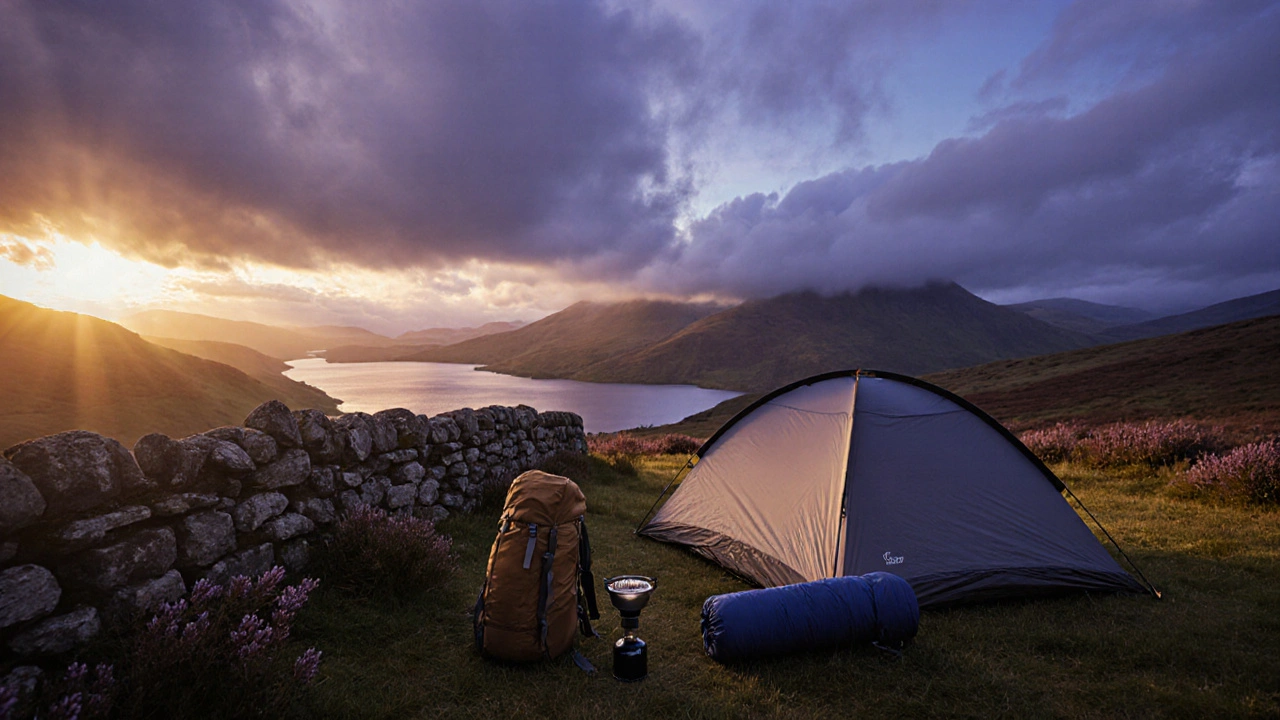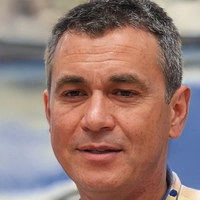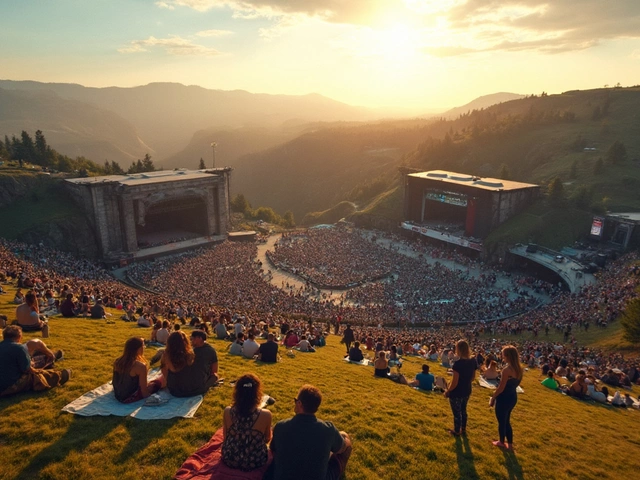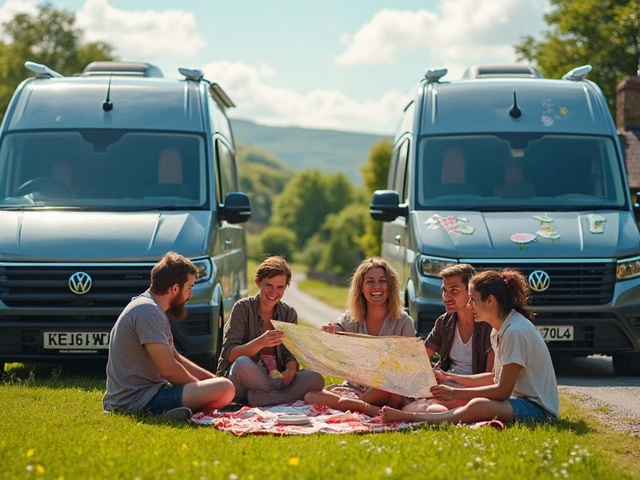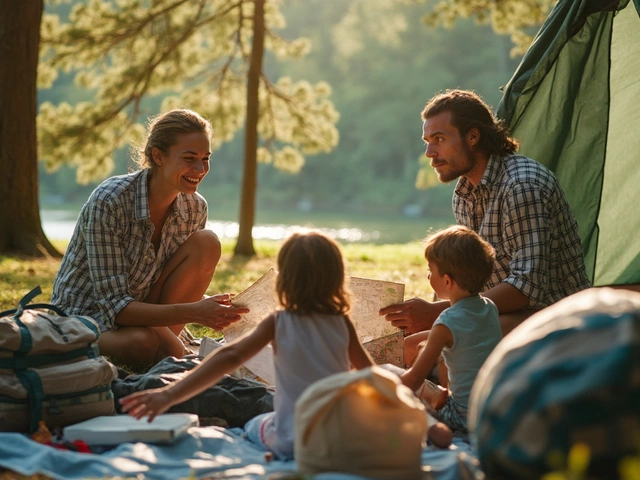Dreaming of waking up to mist‑covered hills, crashing surf and a sky full of stars? wild camping UK lets you ditch the crowded pitches and set up camp wherever nature feels right. Below you’ll find the top regions to roam, the legal basics you need to know, gear that makes the experience comfortable, and a set of practical tips so you can camp responsibly and safely.
Top Wild Camping Regions in the UK
Each area has its own character, so pick the one that matches your vibe. The first mention of every region is marked up as a Scottish Highlands - rugged mountains, deep lochs and endless open sky, perfect for remote bivouacs. Below are five more must‑visit spots, each with a quick snapshot.
| Region | Typical Terrain | Best Season | Notable Spots | Accessibility |
|---|---|---|---|---|
| Scottish Highlands | Mountains, lochs, heath | Late spring‑early autumn | Glen Coe, Loch Lomond, Cairngorms | Remote, 4×4 tracks, footpaths |
| Lake District | Valleys, lakes, rolling fells | June‑September | Buttermere, Ennerdale, Wasdale | Well‑marked trails, parking at trailheads |
| Dartmoor | Granite tors, moorland, bogs | May‑October | Haytor, Hound Tor, Wistman's Wood | Public rights of way, easy walking distance |
| Snowdonia | Steep peaks, rivers, forest | June‑September | Rhinogs, Cadair Idris, Beddgelert | Mix of remote and trail‑accessible spots |
| Northumberland Coast | Sandy beaches, cliffs, dunes | May‑September | Holy Island, Lindisfarne, Craster | Coastal paths, some areas require landowner permission |
Legal Landscape and Permission
Wild camping isn’t outright illegal in England, Wales or Scotland, but the rules differ. In Scotland, the Right to Roam (Land Reform (Scotland) Act 2003) gives you freedom to camp on most unenclosed land, provided you follow the “Leave No Trace” guidelines and stay away from private residences.
England and Wales rely on a mix of the Countryside Code and local bylaws. The safest bet is to:
- choose land owned by the National Trust that explicitly permits wild camping, or
- ask the landowner for permission - a quick text or knock on the farm gate often works.
Remember that some National Parks (like the Lake District) have stricter rules during peak season, so a quick check on the authority’s website saves you a fine.
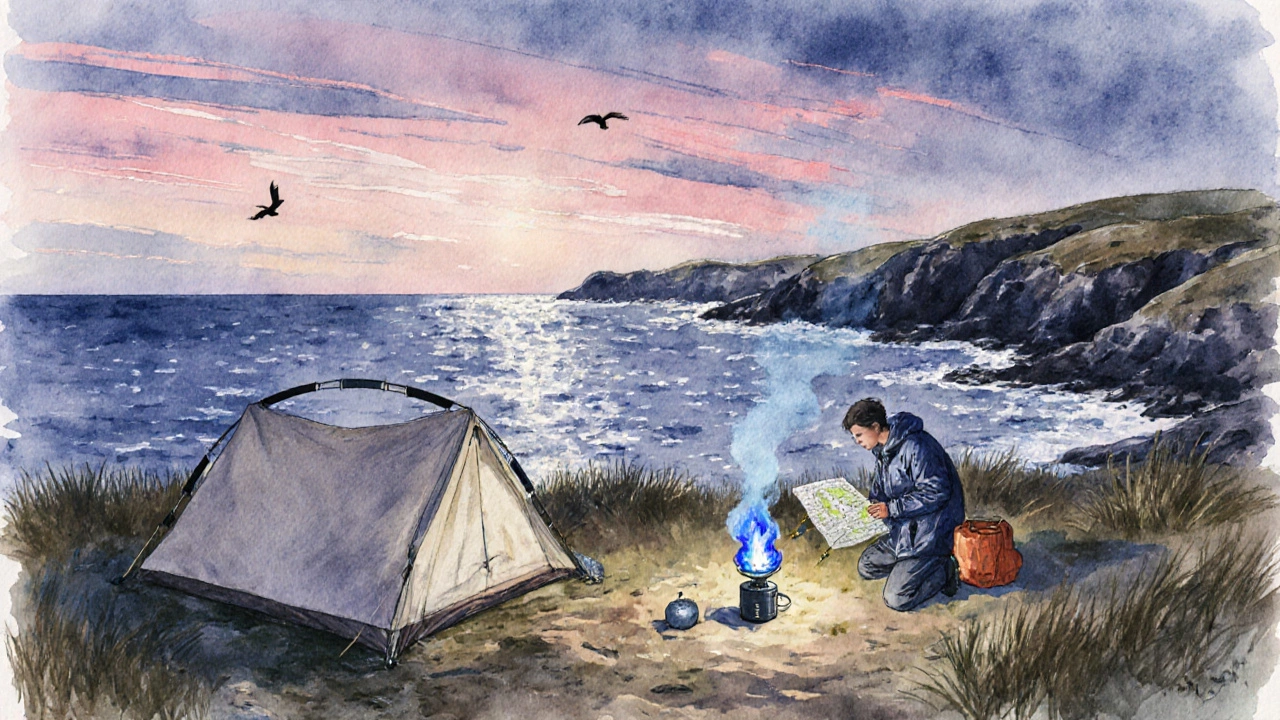
Essential Gear for a Comfortable Night
Good gear is the difference between “just survived” and “had a blast”. Here’s a concise checklist that covers everything from shelter to cooking:
- Tent or bivvy sack - lightweight, waterproof, and with a sturdy guy‑line system.
- Sleeping bag rated for at least 5°C lower than expected night temps; a down‑filled bag works well in the Highlands.
- Insulated sleeping pad - inflatable with a built‑in pump is a quick set‑up option.
- Portable stove (e.g., canister or alcohol) and a compact cookware set.
- Water filtration bottle or pump - streams in the Lake District are clear but may carry parasites.
- Headlamp with spare batteries - dark evenings on the coast can be pitch black.
- Multi‑tool, map, compass (or GPS), and a basic first‑aid kit.
Don’t forget a lightweight rain jacket and waterproof footwear - the UK weather can turn on a dime, especially on the Scottish hills.
Leave No Trace: Respecting the Land
The Leave No Trace principles are simple but powerful. Follow these steps every night you pitch:
- Camp at least 200m away from any water source to protect delicate ecosystems.
- Use a portable stove - open fires are banned in most protected areas.
- Pack out everything: food scraps, toilet paper, and even biodegradable wipes.
- Leave fire‑pits, cairns or any signs of your stay exactly as you found them.
- Minimize impact on vegetation by spreading out your gear on existing clearings.
Following these rules not only keeps the landscape pristine but also helps maintain the goodwill of landowners and local authorities.

Safety Tips & Planning Checklist
Even the most seasoned camper can run into trouble if they’re unprepared. Use the below checklist before you head out:
- Check the weather forecast - especially wind warnings for coastal sites.
- Tell a friend or family member your exact location and expected return time.
- Download offline maps (Ordnance Survey Explorer series works well).
- Carry a whistle and a small emergency beacon if you’re venturing off‑track.
- Know the local wildlife - red‑backed sheep in the Yorkshire Dales can be curious, and adders in the Highlands require careful footing.
When you arrive, do a quick site inspection. Look for signs of previous illegal activity, check for unstable ground, and ensure your tent won’t be overrun by tide if you’re near the Northumberland coast.
Seasonal Considerations & Weather
UK weather is famously changeable, so timing matters:
- Spring (March‑May) - Wildflowers bloom in the Lake District and Peak District, but nights are still cold. Bring a high‑R‑value sleeping bag.
- Summer (June‑August) - Long days, good for coastal camping in Cornwall or the Isle of Wight. Expect crowds, so pick more remote spots like the Mull of Galloway.
- Autumn (September‑November) - Stunning foliage in the Yorkshire Dales and the Cairngorms. Light rain is common; waterproof gear is a must.
- Winter (December‑February) - Only for experienced adventurers with four‑season equipment. Snowy peaks in Scotland are breathtaking, but rescue services are limited.
Regardless of the season, the UK’s Atlantic influence means rain can fall at any hour. Pack a sturdy tarp and a quick‑dry clothing system to stay comfortable.

Putting It All Together - Your First Wild Camping Trip
Here’s a sample 3‑day itinerary that showcases the checklist in action:
- Day1 - Arrival: Drive to the edge of the Lake District, park at a public car‑park near Wasdale, and walk 2km to a cleared, flat area. Set up the tent, cook a simple pasta meal on a canister stove, and enjoy a sunset over the lake.
- Day2 - Exploration: Hike the surrounding fells, stopping for a quick snack. Use a map and compass to navigate back in case the trail fog rolls in. In the evening, move 300m inland to a quieter spot for a second night.
- Day3 - Departure: Break camp early, pack all waste, and head back to the car. Send a quick text to your contact confirming safe return.
This route follows the legal guidelines, uses minimal gear, and respects the environment - a perfect template for beginner wild campers.
Frequently Asked Questions
Is wild camping legal in England?
There is no nationwide right to wild camp in England, but you can camp on land where the owner has given permission, on designated sites of organizations like the National Trust, or in areas where local bylaws allow it. Always check for signs or contact the landowner first.
Do I need a permit to camp in the Scottish Highlands?
No formal permit is required thanks to the Right to Roam, but you must follow the Scottish Outdoor Access Code, stay away from private dwellings, and leave no trace.
What is the best time of year for wild camping on the coast?
Late spring to early autumn (May‑September) offers the warmest temperatures and longest daylight, which is ideal for coastal sites like Northumberland and Cornwall.
How far should I stay from a water source?
At least 200meters (about 650feet) to protect the water quality and surrounding habitat.
Can I use a campfire on my wild camping trip?
Most UK wild‑camping areas prohibit open fires. A portable stove is the safest and often legally required choice.
